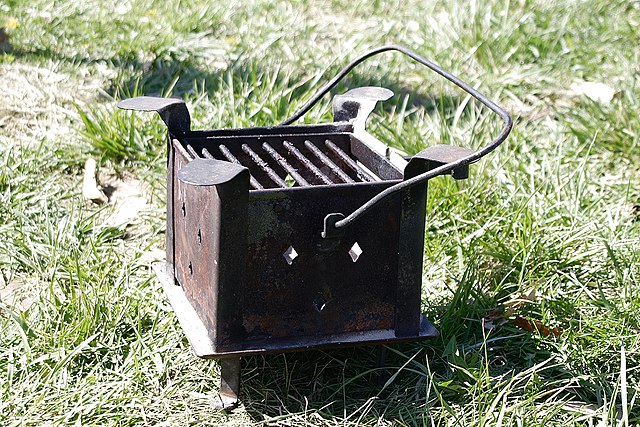The hibachi is a traditional Japanese heating device. It is a brazier which is a round, cylindrical, or box-shaped, open-topped container, made from or lined with a heatproof material and designed to hold burning charcoal. It is believed hibachi date back to the Heian period. It is filled with incombustible ash, and charcoal sits in the center of the ash. To handle the charcoal, a pair of metal chopsticks called hibashi is used, in a way similar to Western fire irons or tongs. Hibachi were used for heating, not for cooking. It heats by radiation, and is too weak to warm a whole room. Sometimes, people placed a tetsubin over the hibachi to boil water for tea. Later, by the 1900s, some cooking was also done over the hibachi.
A porcelain hibachi
North American "Hibachi" cast iron grill
Primitive hibachi from before the Edo period (1600–1868) (Fukagawa Edo Museum)
A traditional charcoal hibachi, made c. 1880–1900
A brazier is a container used to burn charcoal or other solid fuel for cooking, heating or cultural rituals. It often takes the form of a metal box or bowl with feet. Its elevation helps circulate air, feeding oxygen to the fire. Braziers have been used since ancient times; the Nimrud brazier dates to at least 824 BC.
Brazier with burning fire in a rune stone circle at a summer solstice
A brazier being used to grill chicken and steaks.
Ancient Greek brazier and casserole, 6th/4th century BC, exhibited in the Ancient Agora Museum in Athens, housed in the Stoa of Attalus
Simple box-style brazier, with broad grill, intended as a metal container (e.g. kettle/tray) heater/cooker








